Grapple with the complex intersection of bisexuality and biblical texts, unveiling insights that challenge and enlighten modern perspectives.
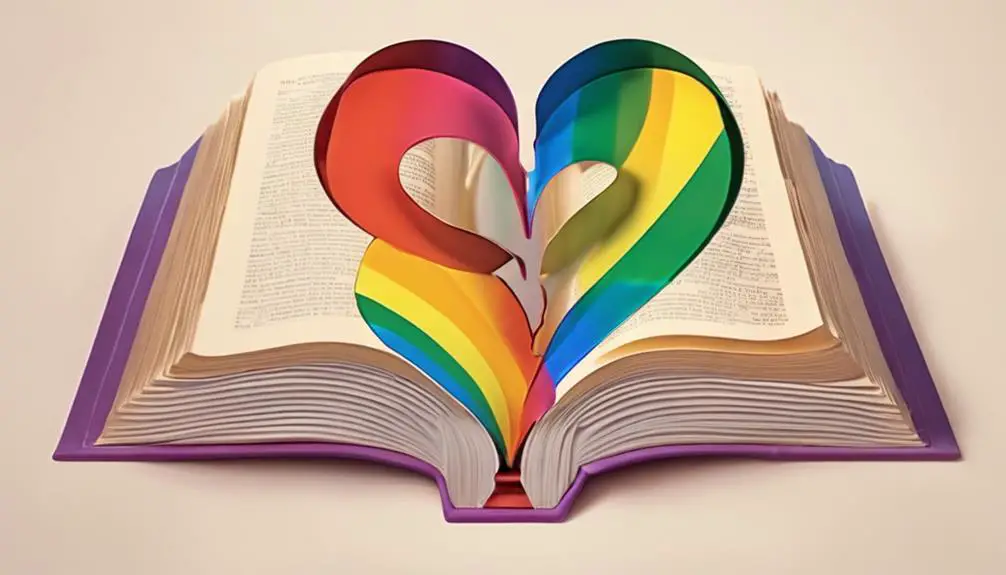
Bisexual in the Bible
Imagine flipping through the Bible, expecting a divine stance on bisexuality, only to find the ancient text doesn't come with a convenient index for modern sexuality queries.
You're now at a crossroads, facing the challenge of understanding how historical and cultural contexts, ambiguous passages, and translation challenges shape theological perspectives on bisexuality.
This journey into the nexus of faith and sexuality might just shift your understanding of what the Bible has to say about bisexuality and its impact on modern beliefs.
Let's explore together, shall we?
Key Takeaways
- Biblical texts must be interpreted within their historical and cultural context to understand ancient views on bisexuality.
- Translation and manuscript variations can lead to differing interpretations of bisexuality in the Bible.
- Diverse theological perspectives influence modern beliefs about bisexuality in biblical narratives.
- Societal norms and legal systems influenced by biblical interpretations impact the treatment and rights of bisexual individuals.
Historical and Cultural Context
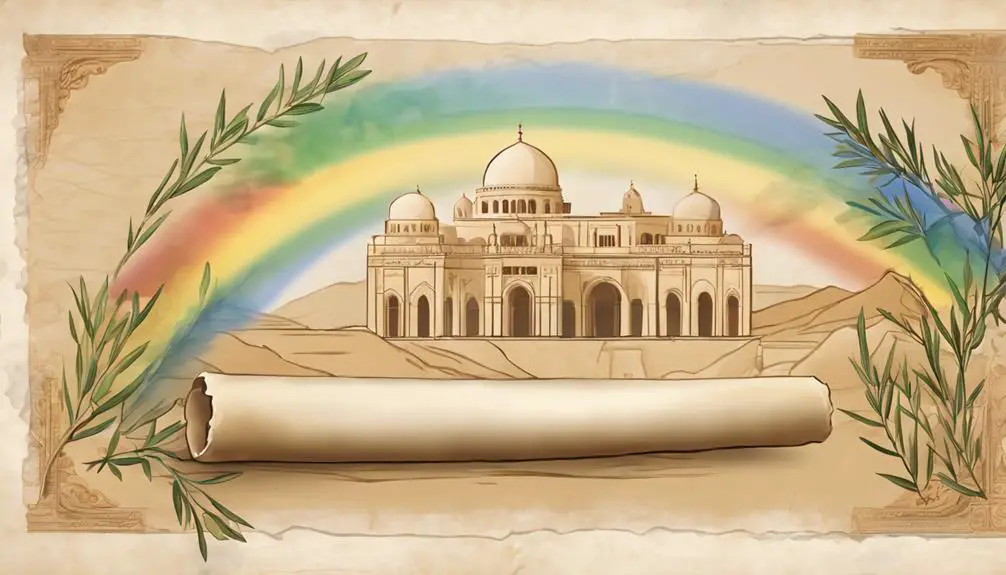
To understand the concept of bisexuality in the Bible, it's essential to examine the historical and cultural context in which the texts were written. The Bible, composed over centuries, reflects the diverse norms and values of ancient societies. These societies had their own understanding of sexuality, often differing significantly from contemporary views. You'll find that ancient norms regarding sexual behavior were deeply intertwined with societal structures, religious practices, and legal codes.
In these ancient contexts, societal taboos played a crucial role in shaping attitudes toward sexual behavior. It's important to note that the concept of sexuality, as understood today, didn't exist in the same form back then. Instead, sexual acts were often viewed through the lenses of property rights, purity codes, and social hierarchy rather than personal identity or orientation. This perspective influenced how bisexuality, or any form of sexual behavior outside the heteronormative framework, was perceived and, consequently, represented in biblical texts.
Moreover, the interpretation of what constituted acceptable versus forbidden sexual behavior was subject to the prevailing cultural and religious ethos. This means that what might be interpreted as references to bisexuality in the Bible can't be detached from the ancient norms and societal taboos of the time. Understanding this historical and cultural backdrop is crucial for anyone attempting to grasp the complex narratives around sexuality in biblical scripture. It requires a nuanced approach that acknowledges the vast differences between ancient and modern perceptions of sexuality, identity, and moral conduct.
Interpreting Ambiguous Passages
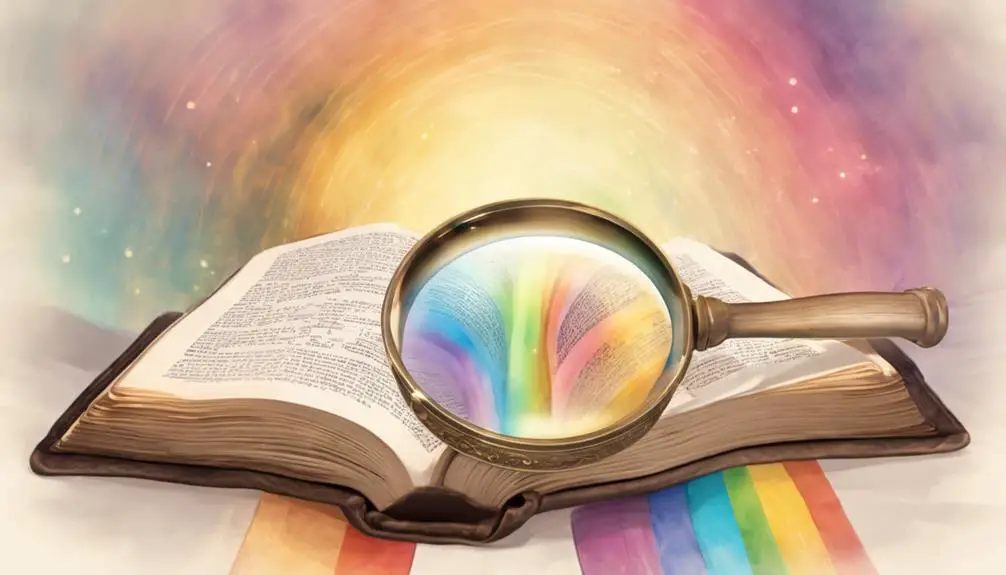
When delving into the Bible, interpreting ambiguous passages about bisexuality requires a critical and informed approach to discern their original meaning and implications. Scriptural ambiguity often stems from the vast cultural, linguistic, and historical gaps between ancient texts and contemporary understanding. You're navigating a complex terrain where personal interpretations play a significant role, yet must be grounded in scholarly research and hermeneutic rigor.
The challenge lies in the fact that the Bible doesn't explicitly mention bisexuality in modern terms. This absence leaves room for a wide spectrum of interpretations, influenced by personal beliefs, theological inclinations, and cultural biases. As you engage with these texts, it's essential to recognize the potential for projecting contemporary views onto ancient writings. This awareness encourages a more nuanced and respectful approach to scripture, acknowledging its multifaceted nature.
Moreover, scriptural ambiguity requires you to consider the broader context of biblical passages. Words and phrases that may seem clear-cut at first glance often reveal a depth of meaning when examined in their original linguistic and cultural setting. This depth can significantly alter the perceived stance of the Bible on topics like bisexuality.
Ultimately, personal interpretations of ambiguous passages are inevitable. However, they should be approached with humility and a willingness to listen to diverse perspectives. Engaging with scholars, theologians, and members of the LGBTQ+ community can enrich your understanding, providing a more holistic view of scripture. This dialogue is crucial for navigating the complexities of interpreting ambiguous biblical passages about bisexuality.
Theological Perspectives

Building on the exploration of ambiguous passages, it's crucial to examine the diverse theological perspectives that shape interpretations of bisexuality in the Bible. You'll find that scholars and theologians diverge significantly in their readings, influenced heavily by their understanding of divine love and moral teachings.
At the heart of these debates is the question of how divine love manifests in human relationships, including those that are bisexual in nature. Some theologians argue that divine love is unconditional and inclusive, suggesting that bisexuality, when expressed within the bounds of love, respect, and consent, aligns with biblical teachings of love and companionship.
Others focus on the moral teachings of the Bible, interpreting them in a way that questions or condemns bisexuality. They often point to specific verses, interpreting them within a traditional framework that sees heterosexual relationships as the only biblically sanctioned option.
Yet, the conversation is far from black and white. Many theologians seek a middle ground, trying to reconcile traditional interpretations with a more inclusive understanding of divine love. They argue for a deeper, contextual reading of the scriptures, considering the historical and cultural context in which they were written.
To evoke emotion in the audience, consider the following points:
- The profound longing for acceptance and love that resonates with everyone, regardless of sexual orientation.
- The pain and alienation felt by those who find themselves at odds with rigid interpretations of scripture.
- The hope and liberation that comes from interpretations of divine love as encompassing and unconditional.
Analyzing these theological perspectives offers a nuanced view of the complex interplay between faith, love, and identity.
Translation Challenges
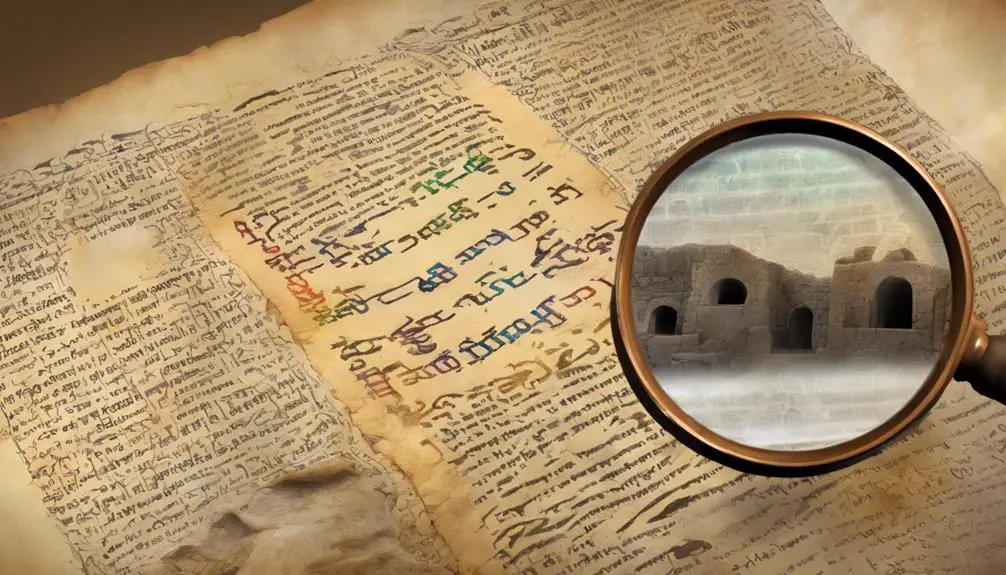
How do translation challenges impact our understanding of bisexuality in biblical texts? When you delve into the complexities of translating ancient texts, it's crucial to recognize that linguistic nuances and manuscript variations play a significant role. These elements can dramatically alter the interpretation of passages that might refer to bisexuality, leading to varied understandings across different cultures and eras.
Aspect |
Impact on Translation |
Consequence for Understanding Bisexuality |
|---|---|---|
Linguistic Nuances |
Subtle meanings lost |
Misinterpretation of sexual references |
Manuscript Variations |
Differing source texts |
Inconsistent portrayals of relationships |
Cultural Context |
Shifts in societal norms |
Evolving interpretations of sexuality |
Translator Bias |
Personal beliefs influence |
Skewed representation of bisexuality |
Historical Context |
Changes in language usage |
Misaligned perceptions of ancient practices |
Delving into linguistic nuances, you'll find that the original languages of biblical texts—Hebrew, Aramaic, and Greek—contain words and phrases with multiple meanings, often without direct equivalents in modern languages. This multiplicity can lead to significant discrepancies in how sexual identities and relationships are portrayed.
Manuscript variations further complicate translation efforts. Different ancient manuscripts of the same text sometimes offer varying versions of certain passages. These differences can stem from copying errors, intentional alterations, or simply the evolution of language over time. Such variations necessitate careful comparison and analysis to discern the most accurate interpretation of texts regarding bisexuality.
Impacts on Modern Beliefs
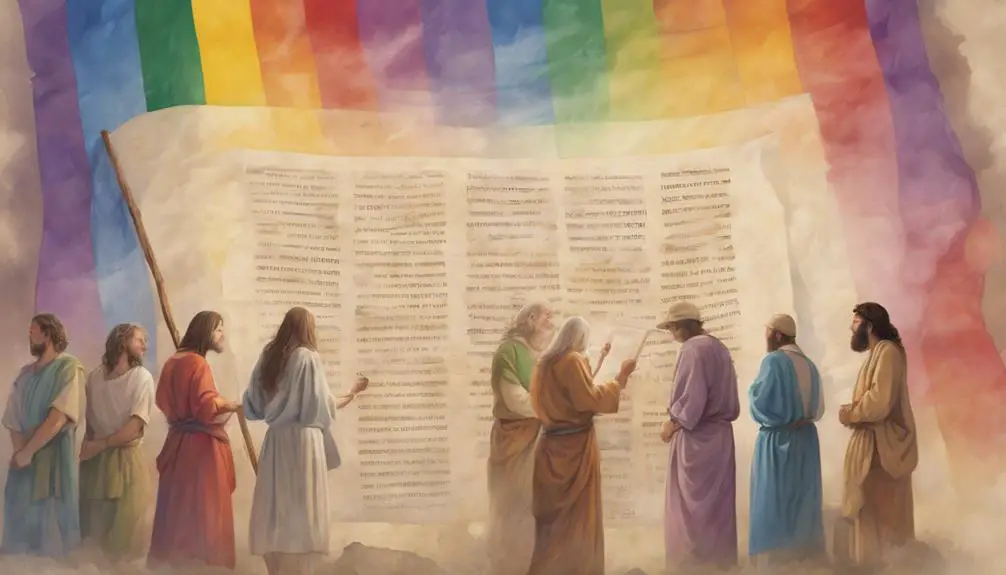
The translation challenges associated with biblical texts have profound implications for contemporary understandings of bisexuality, shaping societal beliefs and attitudes towards sexual orientation. As you delve deeper into the intricacies of how ancient narratives impact modern viewpoints, it becomes clear that the interpretations of these texts directly influence both social stigma and legal implications surrounding bisexuality.
Historically, certain biblical passages have been interpreted in ways that seemingly condemn non-heteronormative sexual orientations. This interpretation fosters a social stigma against bisexual individuals, perpetuating a cycle of misunderstanding and prejudice. It's not just about personal beliefs; these interpretations seep into societal norms, affecting how people view and treat those who identify as bisexual.
From a legal standpoint, the moral codes derived from biblical texts have been used to justify laws and policies that discriminate against bisexual individuals. This includes everything from marriage laws to discrimination in employment and housing. The enduring influence of these texts reveals a complex relationship between religion, law, and personal rights.
Consider the following points that evoke the emotional and societal impact of this issue:
- The fear and isolation felt by individuals who are stigmatized for their sexual orientation.
- The frustration of battling legal systems that don't fully recognize or protect bisexual rights.
- The pain of internal conflict when religious beliefs clash with personal identity.
As you reflect on the profound impact of biblical interpretation on modern beliefs, it's essential to approach the topic with both sensitivity and a critical eye. By examining the roots of these societal and legal challenges, there's hope for fostering a more inclusive and understanding world.
Frequently Asked Questions
How Have Specific Individuals in the Bible Been Interpreted or Reinterpreted as Bisexual by Different Communities or Scholars?
You've asked how scholars or communities have reinterpreted biblical figures as bisexual. Focusing on David's Companions and Ruth's Loyalty, interpretations vary.
Some view David's close relationship with Jonathan as transcending friendship, hinting at a deeper bond. Likewise, Ruth's devotion to Naomi is seen by some as exceeding familial loyalty, suggesting a profound connection.
These readings, while not universally accepted, offer an inclusive perspective on love and loyalty in these historical texts.
In What Ways Have Contemporary Bisexual Individuals Found Personal Connections or Representation Within Biblical Narratives or Figures?
Exploring ancient texts, you've unearthed personal connections within biblical narratives, marrying Biblical language nuances with modern identity paradigms.
As you delve into these timeless stories, you're not just reading; you're finding reflections of yourself amidst the prophets and parables.
This journey isn't about altering the text but understanding its layers, discovering how its messages resonate on a deeply personal level, bridging gaps between historical contexts and contemporary bisexual identities.
Are There Any Recorded Reactions or Discussions From Early Christian or Jewish Communities Specifically Regarding Bisexuality?
You're exploring if early Christian or Jewish communities specifically discussed bisexuality. Ancient interpretations and cultural contexts are vital to understanding these discussions.
However, direct references or explicit discussions on bisexuality in ancient texts are rare. Scholars analyze texts and historical records to deduce attitudes towards bisexuality, but clear, documented reactions are scarce.
These communities' views often reflect broader societal norms and understandings of sexuality during their times.
How Do Various Denominations Today Address or Acknowledge the Existence of Bisexuality When Discussing Biblical Teachings on Sexuality?
When exploring how modern denominations address sexuality, you'll find a spectrum of responses. Denominational policies often reflect this diversity, especially concerning bisexuality, a topic on which the Bible remains silent.
This silence invites various interpretations, leading to a rich analytical dialogue within communities. As you delve deeper, you'll discover that interpretations are as varied as the denominations themselves, each bringing its own scholarly, objective analysis to the conversation.
What Role Have Feminist and Queer Theological Approaches Played in Reevaluating the Presence and Representation of Bisexuality in the Bible?
Feminist and queer theological approaches have significantly contributed to theological inclusivity by reevaluating traditional interpretations. These perspectives leverage interpretive methodologies that unearth overlooked or marginalized narratives within sacred texts.
Conclusion
In navigating the historical corridors and cultural tapestries of the Bible, you've ventured through the complexity of ambiguous passages, deciphered the enigma of translation challenges, and explored diverse theological landscapes.
This journey illuminates how interpretations, marred by time and bias, shape modern beliefs, urging a reevaluation of understanding. Like rivers merging into the sea, these elements converge, highlighting the need for a nuanced approach to bisexuality within biblical texts, encouraging a broader, more inclusive dialogue within faith communities.



Sign up